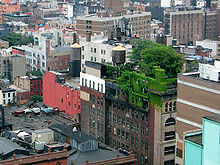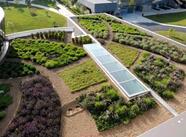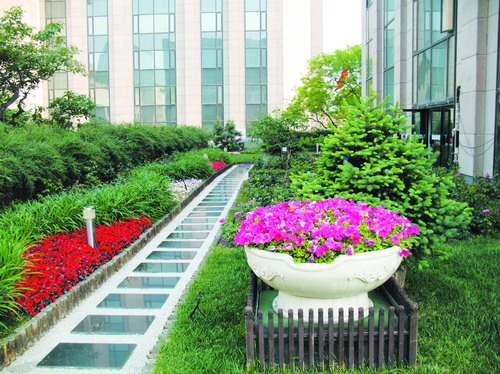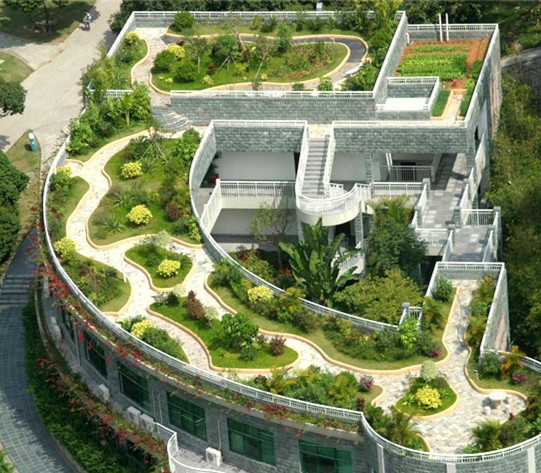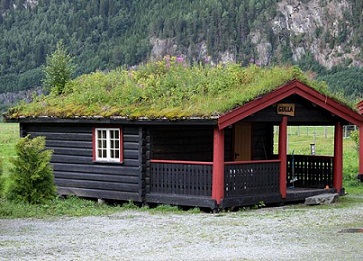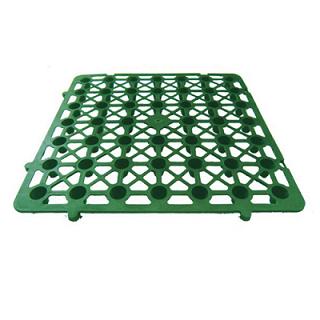Types of Roof Wall
An intensive roof garden in Manhattan
Green roofs can be categorized as intensive, “semi-intensive”, or extensive, depending on the depth of planting medium and the amount of maintenance they need. Traditional roof gardens, which require a reasonable depth of soil to grow large plants or conventional lawns, are considered “intensive” because they are labour-intensive, requiring irrigation, feeding and other maintenance. Intensive roofs are more park-like with easy access and may include anything from kitchen herbs to shrubs and small trees. “Extensive” green roofs, by contrast, are designed to be virtually self-sustaining and should require only a minimum of maintenance, perhaps a once-yearly weeding or an application of slow-release fertiliser to boost growth. Extensive roofs are usually only accessed for maintenance. They can be established on a very thin layer of “soil” (most use specially formulated composts): even a thin layer of rockwool laid directly onto a watertight roof can support a planting of Sedum species and mosses.
Another important distinction is between pitched green roofs and flat green roofs. Pitched sod roofs, a traditional feature of many Scandinavian buildings, tend to be of a simpler design than flat green roofs. This is because the pitch of the roof reduces the risk of water penetrating through the roof structure, allowing the use of fewer waterproofing and drainage layers.


